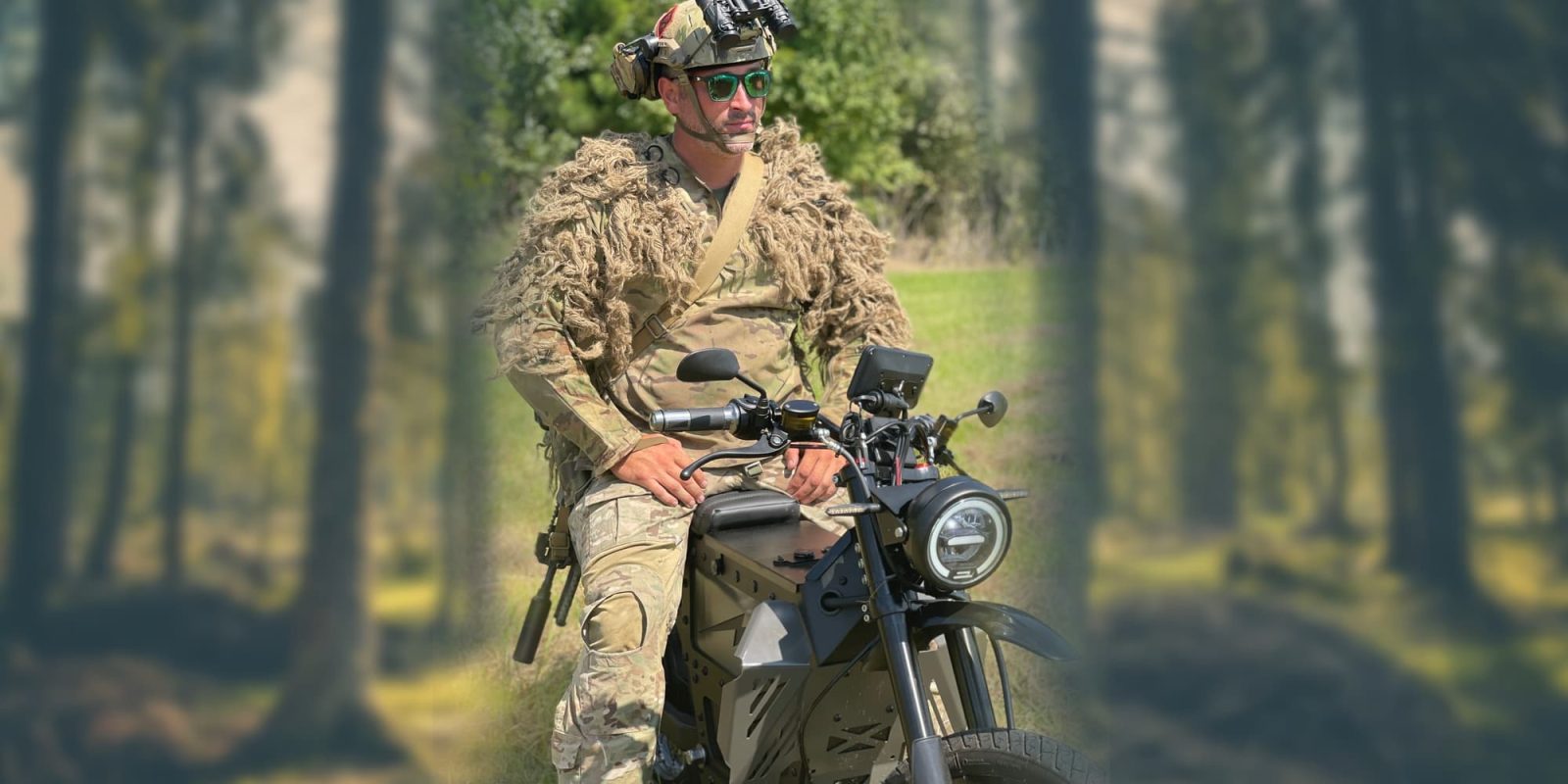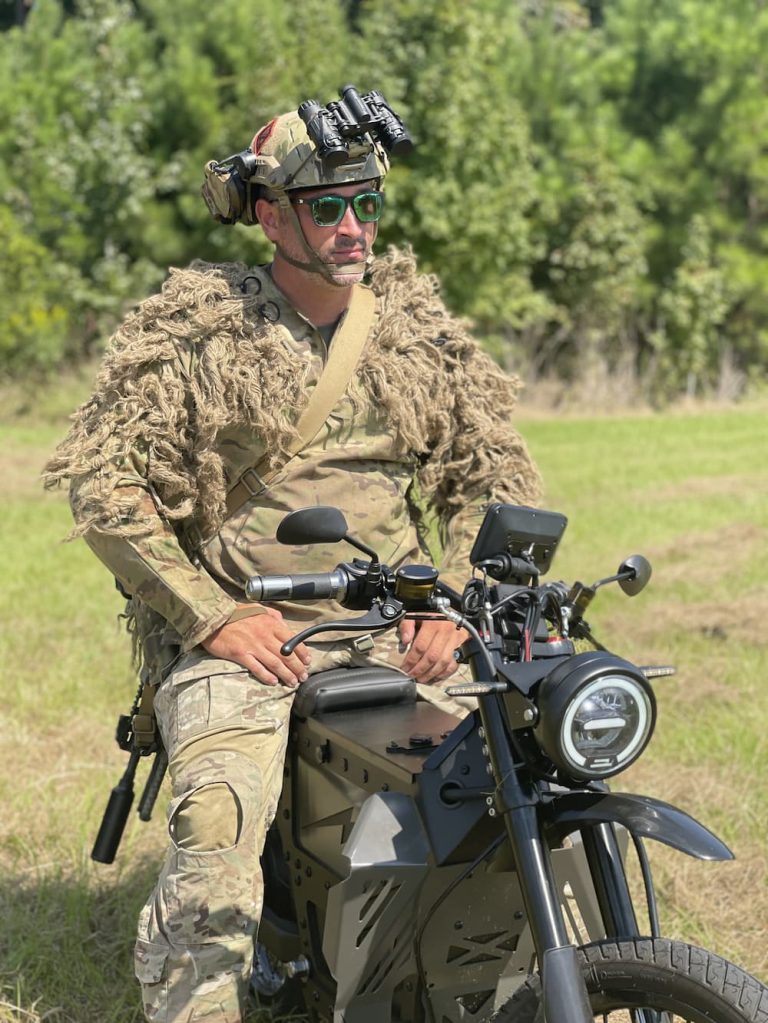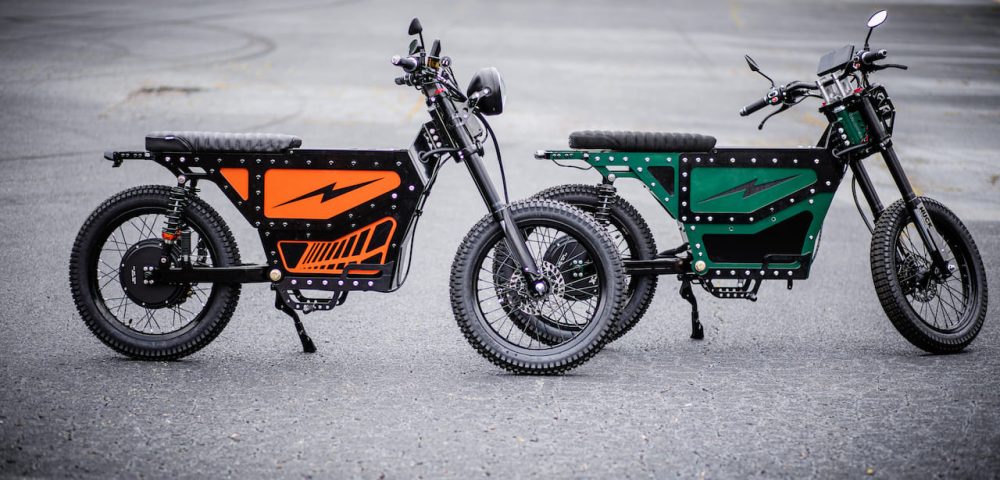
Light electric vehicles have seen growing interest from militaries all over the world. Now the latest electric motorbike receiving its draft card comes from North Carolina-based electric moped builder Huck Cycles.
Huck Overland enlists
The company recently shared news that its Huck Overland model is currently being evaluated by the US Military as well as various government and private agencies.
It’s something of a return to form for Huck’s founder and owner Brett McCoy, an Army veteran who served in the airborne infantry.
According to the company, two Huck Overlands models have recently been trialed in various live fire exercises and tested for uses in search and rescue, border and perimeter patrol, air deployment, medical evacuations with rolling gurneys, covert operations, remote deployment, and mobility caching.

The Huck Overland is an electric motorbike (or what some may consider a “noped” due to its lack of pedals) that was inspired by the classic Honda Motra, itself a popular recreational mini-bike from the 1980s.
Far from a heavyweight electric adventure bike, the 145-pound (65 kg) Huck Overland is a smaller and more agile vehicle. The silent electric motorbike comes with a 3 kW nominal and 6 kW peak-rated motor putting out up to 8 horsepower, and carries a 3 kWh battery rated for 40 miles (64 km) of range.
With multiple operational modes, Huck’s bikes are technically rated to reach speeds of “45+ mph,” with that plus sign likely doing some heavy lifting. Private owners have reported exceeding that 45 mph figure with room to spare.
The $5,800 bike is normally sold for personal use and was actually intended for the hunting, fishing, and outdoorsman market – hence the name Overland. But the company has since found that the light electric motorbike has proven popular in big cities for use as a commuter motorcycle. The bike ships as a street-legal motorbike with a VIN and manufacturer’s certificate of origin, allowing riders to register it if they want to use it for on-road use.
As founder and CEO Brett McCoy explained to Electrek:
I’ve been shocked at how many people in larger cities like NYC, LA, and Miami have jumped on this model as a daily commuter. Apparently, the rugged Mad Max look is in for city riders too.

Electric motorcycles and e-bikes are rapidly becoming a common tool employed by militaries around the world. Earlier this summer we reported on other lightweight electric motorbikes that were adopted for use by the Ukrainian military. Those bikes were mounted with NLAW rockets to help Ukrainian defenders take out Russian tanks from a nimble, mobile platform. Ukrainian snipers have also used electric motorbikes to quietly get into firing position and then quickly bug out.
That may be one of the latest examples of e-bikes entering active duty, but it’s far from the first.
Back in 2018 we learned that Norway’s armed forces began testing fat-tire electric bicycles in border guard patrols.
Patrol duties were also tested by the New Zealand Defense Forces in 2020 when they began trialing UBCO’s electric utility bikes.
Australian soldiers have been testing out stealth electric bikes since last year, and we also saw the first application of helicopter-mounted electric motorcycles late last year in an application designed for quick insertion of special operators on low-signature electric dirt bikes.
Multiple special forces units in Europe and the Middle East have also tested high-power electric mountain bikes for field use, with paratroopers even air-dropping electric dirt bikes onto the battlefield.
I may not be able to compete with helicopter-mounted electric motorbikes, but I was at least using e-bikes in uniform before it was cool. Back in the early 2010s when I served in the IDF, my e-bike was my main method of transportation, and I was quite a sight zipping through the city with an M-16 on my back.
FTC: We use income earning auto affiliate links. More.

